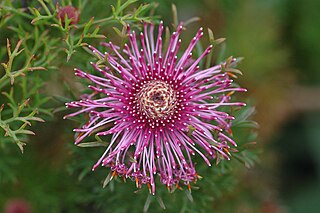
Isopogon formosus, commonly known as rose coneflower, is a species of flowering plant in the family Proteaceae and is endemic to the south-west of Western Australia. It is a shrub with divided leaves with cylindrical segments, and spherical to oval heads of pink or red flowers.

Isopogon cuneatus, commonly known as coneflower, is a species of plant in the family Proteaceae and is endemic to the south-west of Western Australia. It is a shrub with oblong to egg-shaped leaves with the narrower end towards the base, and flattened-spherical heads of glabrous pale to purplish pink flowers.

Petrophile linearis, commonly known as pixie mops, is a species of flowering plant in the family Proteaceae and is endemic to southwestern Western Australia. It is a shrub with narrow egg-shaped leaves, the narrower end towards the base, and oval to spherical heads of hairy, greyish-pink or mauve to almost white flowers.

Petrophile pulchella, commonly known as conesticks, is a common shrub of the family Proteaceae and is found in eastern Australia. The leaves are divided with needle-shaped but soft pinnae, the flowers silky-hairy, cream-coloured and arranged in oval heads and the fruit are arranged in oval heads. Conesticks grows on shallow sandstone soils, often in open forest or heathlands near the coast. It is also occasionally seen on the adjacent ranges.

Petrophile pedunculata, commonly known as conesticks, is a species of flowering plant in the family Proteaceae and is endemic to New South Wales. It has divided leaves with needle-shaped pinnae and oval heads of sparsely hairy yellow or cream-coloured flowers, the heads on a peduncle 10–15 mm (0.39–0.59 in) long.

Isopogon axillaris is a species of plant in the family Proteaceae and is endemic to the south-west of Western Australia. It is a shrub with thick, linear to lance-shaped leaves with the narrower end towards the base and oval heads of pink or purple flowers.

Petrophile acicularis is a species of flowering plant in the family Proteaceae and is endemic to southwestern Western Australia. It is a low, tufted shrub with cylindrical leaves and oval heads of densely hairy, cream-coloured flowers.

Petrophile diversifolia is a species of flowering plant in the family Proteaceae and is endemic to southwestern Western Australia. It is a shrub with pinnate, sharply-pointed leaves, and oval heads of densely hairy, white or creamy-white flowers.
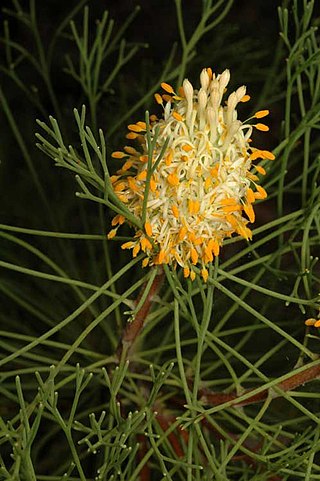
Petrophile fastigiata is a species of flowering plant in the family Proteaceae and is endemic to southwestern Western Australia. It is a shrub with pinnately-divided leaves with needle-shaped pinnae and sticky, oval heads of glabrous yellow to cream-coloured flowers.

Petrophile filifolia is a species of flowering plant in the family Proteaceae and is endemic to southwestern Western Australia. It is a small shrub with curved, long, needle-shaped leaves and more or less spherical heads of hairy cream-coloured to pale yellow flowers.
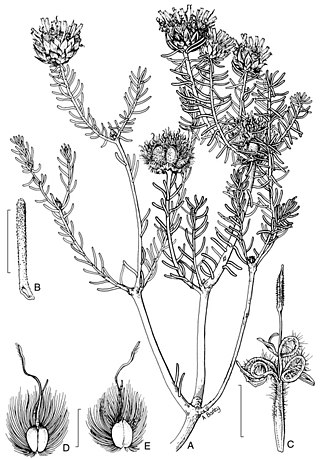
Petrophile merrallii is a species of flowering plant in the family Proteaceae and is endemic to southwestern Western Australia. It is an erect shrub with spreading, needle-shaped leaves and oval to spherical heads of hairy yellow flowers.
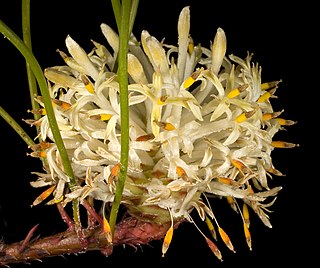
Petrophile prostrata is a species of flowering plant in the family Proteaceae and is endemic to southwestern Western Australia. It is a prostrate shrub with needle-shaped but usually not sharply-pointed leaves and spherical heads of hairy, pale yellow or cream-coloured flowers.

Petrophile recurva is a species of flowering plant in the family Proteaceae and is endemic to south-western Western Australia. It is an erect, many-branched shrub with needle-shaped, sharply-pointed leaves, and spherical heads of hairy pale yellow or cream-coloured flowers.

Petrophile rigida is a species of flowering plant in the family Proteaceae and is endemic to southwestern Western Australia. It is a shrub with rigid, branched, needle-shaped, sharply-pointed leaves, and more or less spherical heads of hairy yellow flowers.
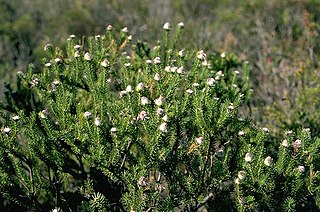
Petrophile scabriuscula is a species of flowering plant in the family Proteaceae and is endemic to southwestern Western Australia. It is a dense, prickly shrub with sharply-pointed, needle-shaped leaves more or less pressed against the branchlets, and oval heads of hairy, yellow to creamy-yellow flowers.
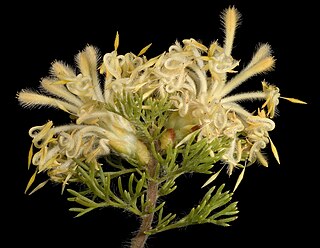
Petrophile serruriae is a species of flowering plant in the family Proteaceae and is endemic to southwestern Western Australia. It is a shrub with crowded, pinnate, needle-shaped, sharply-pointed leaves, and oval heads of silky-hairy yellow, greyish mauve to pink flowers.

Petrophile squamata is a species of flowering plant in the family Proteaceae and is endemic to the south-west of Western Australia. It is a shrub usually with deeply divided, three-lobed and sharply-pointed leaves, and oval heads of hairy yellow or creamy-yellow flowers.
Petrophile stricta is a species of flowering plant in the family Proteaceae and is endemic to the south-west of Western Australia. It is an erect, spreading shrub with needle-shaped, sharply-pointed leaves, and oval heads of hairy, pink to cream-coloured flowers.
Petrophile vana is a species of flowering plant in the family Proteaceae and is endemic to inland Western Australia. It is a shrub with needle-shaped, sharply-pointed leaves, and spherical to oval heads of small numbers of hairy, white flowers.
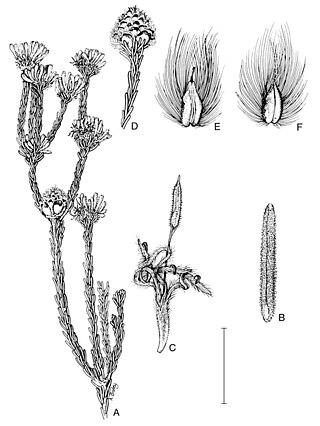
Petrophile wonganensis is a species of flowering plant in the family Proteaceae and is endemic to the south-west of Western Australia. It is a dense shrub with blunt, needle-shaped leaves, and more or less spherical heads of hairy, yellow flowers.



















